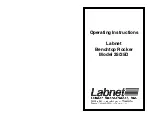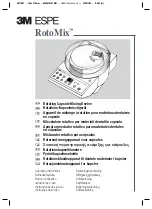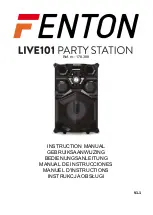
2
1 Introduction
The unit has 2 operational modes for restoring a signal - automatic or
manual. In both modes the unit will automatically switch over to a valid
auxiliary source upon detecting silence. When a valid main signal returns
it will either restore to the main channel automatically or manually
depending on the mode selected.
The RB-SD1IP has a number of remote operational features. Rear panel
remote outputs provide separate relay contact closures for failure of the
main and auxiliary inputs. You can also remotely control all of the front
panel switches for source selection, mode selection and signal Restore.
You can remotely start and stop another piece of equipment on alarm
failure and main signal return respectively. A silence time of 2 minutes
and 5 seconds can be set remotely, which is useful if you are expecting to
broadcast a long silence.
The unit has three signal type operational modes – Stereo, Mono and
Independent. In stereo mode, the unit will alarm if either the left or right
channel falls silent. In mono mode the unit will only alarm if both left and
right channels fall silent. In independent mode the unit can be configured
to operate as a 2 channel mono silence detector, alarming and switching
the two input channels independently. There are also options to set the
remote start output as momentary or latched, to disable switching to the
auxiliary input on alarming and to increase the gain on the auxiliary inputs
so that unbalanced sources can be used, for example, from a domestic flash
memory/USB player.
Front panel LED indicators show individually left and right programme
status and alarm conditions for both the main and auxiliary inputs. The
status of the source, mode and alarm state are also shown on the front
panel with LED indicators.
The RB-SD1IP has been designed to have a passive signal path through the
main input, so if power to the unit fails, the signal input will still be routed
through to the output. This is essential for applications such as installation
at transmitter sites, where a power failure to the unit should not prevent
the audio input signal from being output to the transmitter.













































